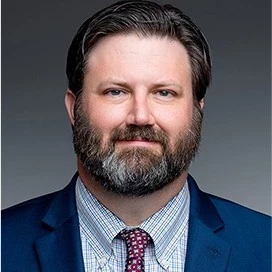How Risky Are You? Discover Your Risk Profile To Be the Best You Can Be
Add bookmark
At a time of deep uncertainty when it can be deemed risky to board an airplane or even shake hands, international best-selling author Michele Wucker wants you to understand that what you risk, who you are and how you behave personally and professionally around risk are inextricably linked.
Looking at Risk and Reactions
Whether you're someone who bungee jumps in an Amazonian jungle or just worries about purchasing toothpaste on Amazon, the economic, political, social, physical, emotional and health landscapes of the past year have made this a perfect time to discover your own risk profile. You need to know your risk compass. You need to understand your risk fingerprint.
In her new book, You Are What You Risk: The New Art and Science of Navigating an Uncertain World, Michele Wucker masterfully explains and eloquently narrates scenarios of risk-taking and those who avoid or embrace uncharted waters—and why.
Basing her conclusions on deep scientific research, evidence, her own interviews, experience and personal insights as a journalist, educator and think tank director, Wucker can assure anyone that believing in the assessments she offers is no risk at all. Yet, the collective approach to risk seems binary and judgmental.
“If risk-takers succeed, we worship them. If they fail, we’re likely to demonize them,” says Wucker, former head of the World Policy Institute and leader at Chicago Council of Global Affairs.
So she set out to analyze why.
In the summer of 2017, Wucker was in China giving a speech connected to her third book, The Gray Rhino: How to Recognize and Act on the Obvious Dangers We Ignore, and a member in the audience came up to greet her afterward.
“It was a big surprise that this person said the book helped with so much of their life,” says Wucker, a former journalist for Milwaukee Sentinel, Dow Jones and International Financing Review. “Once back in the U.S., I said I don’t know what to do with this, or what I have to offer. I've never written a self-help book, it’s not my brand or my strength.”
But a friend relayed a story about being on an investment committee and talking not just about disappointments, but about the red flags and bad personal risk decisions.
“It was a connection between people’s personal relationships with risk and much bigger things,” Wucker says. “I wanted to look into the personal aspect and the cultural impact of risk,” she says.
“Looking at risk is like going into a room full of funhouse mirrors,” says Wucker, who earned a master's from Columbia University’s School of International Affairs. “But the very act of recognizing a risk makes you more likely to do something about it.“
Professionally, how someone acts upon the notion of risk has a number of factors. “The way we see risk depends on cultural environment, whether the company thinks whistleblowers are good or bad, whether it rewards success, personal experiences, personalities, the mix of people in the room and the temperature of the room,” says Wucker, author of Why the Cocks Fight: Dominicans, Haitians, and the Struggle for Hispaniola, published in 1999, and the 2006 book, Lockout: Why America Keeps Getting Immigration Wrong When Our Prosperity Depends on Getting It Right.
The Role of Gender in Risk-Taking
Gender also plays a role in risk-taking. Wucker writes, “Risk stereotypes affect how both genders think they are supposed to behave and can create conflicts when one member of either gender is not acting typically. In other words, they hurt men as well as women.”
The most common risk stereotype is that women are risk-averse and men are risk-tolerant. Wucker writes, “Women are judged more harshly when they take risks seen as non-gender typical.”
And risky for a woman can be as simple as speaking up in a meeting.
“'Risk averse’ is applied in a pejorative way, but really women and millennials take the time to analyze risk more often before they make a decision,” Wucker says. “Women are more willing to take social risks like speaking up and these risks are much higher for women. When they are brought on a board, when everyone in the room looks the same, there is extra pressure on them.”
While she dives into decades of research that account for the gender-based stereotypes of risk-taking, Wucker explains, “the fact that women step onto the glass cliffs suggest that women are not more risk-averse, but that they have a higher risk tolerance than men. There is a 95% overlap for men and women in risk preferences.”
At this cultural and historic moment in time with a pandemic, social unrest over injustice, and inequities contributing to economic fallout and recovery, notions of risk have shifted.
“COVID has us a lot more aware of risks and also how we deal with them,” says Wucker, who confides that she takes some risks professionally, but not with her health. “Some handle it by not going out at all, others deal with it by throwing off their mask and saying they aren't afraid. There's a happy medium.” She adds, “This shows us how people around us are making risk decisions.”
Looking at risk-taking as a positive is gaining momentum, according to Jason Richmond writing in Business.com, “Employees need to know that they're supported in their risky ventures.
Management can provide a safety net by promoting the behavior they want the employees to exhibit through their own actions.” This happens through modeling, enabling, support and consistency. “People are confused when support wavers, so managers need to stay strong, even when risky decisions don't always have a positive outcome.”
Risk Fingerprints
So how can you understand your own preference for risk—personally and professionally? Wucker says your risk fingerprint “is the set of risk choices you make that identify you to others just as clearly as fingerprints you leave on a glass. It defines you.
Part of it is innate, whether you're methodical or impulsive. But that doesn’t mean everything about your risk fingerprint is unchangeable. The habits you use and things you do affect the way you make risk decisions in your daily life.”
What she's learned about the risk fingerprints of individuals is that “privilege goes with risk-taking,” Wucker says. “And you also see people who become entrepreneurs because that is the only choice.”
The same scenario may evoke notions of different risk levels in different people with different risk fingerprints. “The same risk on paper is not at all the same for different people,” Wucker says.
How different risk fingerprints affect the workplace is key to effective leadership.
Wucker’s Key Takeaways For Understanding the Strengths and Weaknesses Connected With Your Profile
Identify your risk fingerprint. “If you know you're more impulsive, then offset that with more methodical people around you. If you become more anxious around risk-taking, then surround yourself with people with skills, guidance and the resources you need. A good leader understands where they are coming from and the people in the organization pay attention to the risk profiles they are.”
Consider the risk fingerprints of those around you. “You want to think about the risk fingerprints of suppliers, customers as well as colleagues and employees."
Use old-fashioned listening. “There are questions you can ask such as ‘What is the biggest risk you ever took? What are you willing to put on the line? What are you not willing to risk?’ Ask questions about a crisis and difficult situations; pose a hypothetical.”
Have risk empathy. “Know how to put someone in a situation where they will make the smartest risk decisions. This is important in negotiations and relationships.”
Know your risk portfolio. Not everyone employs risk at the same level in all situations. “What do you do with it? Are you a person who runs to the airport gate at the last minute or a person who arrives way too early? Look at where you are in your entire risk portfolio across your life.”
Develop a risk budget. “You can have career and relationship risks, but not at the same time as health. If you’re taking a ton of risks personally, maybe take the time to deal with that.”
Understanding your relationship with risk is not a risky endeavor, Wucker says.
“I want people to really reflect and have a conversation around risk decisions they make in their lives—personally, professionally, for the community and the planet.”
This article originally appeared on the Take the Lead website. You can view it here.
































